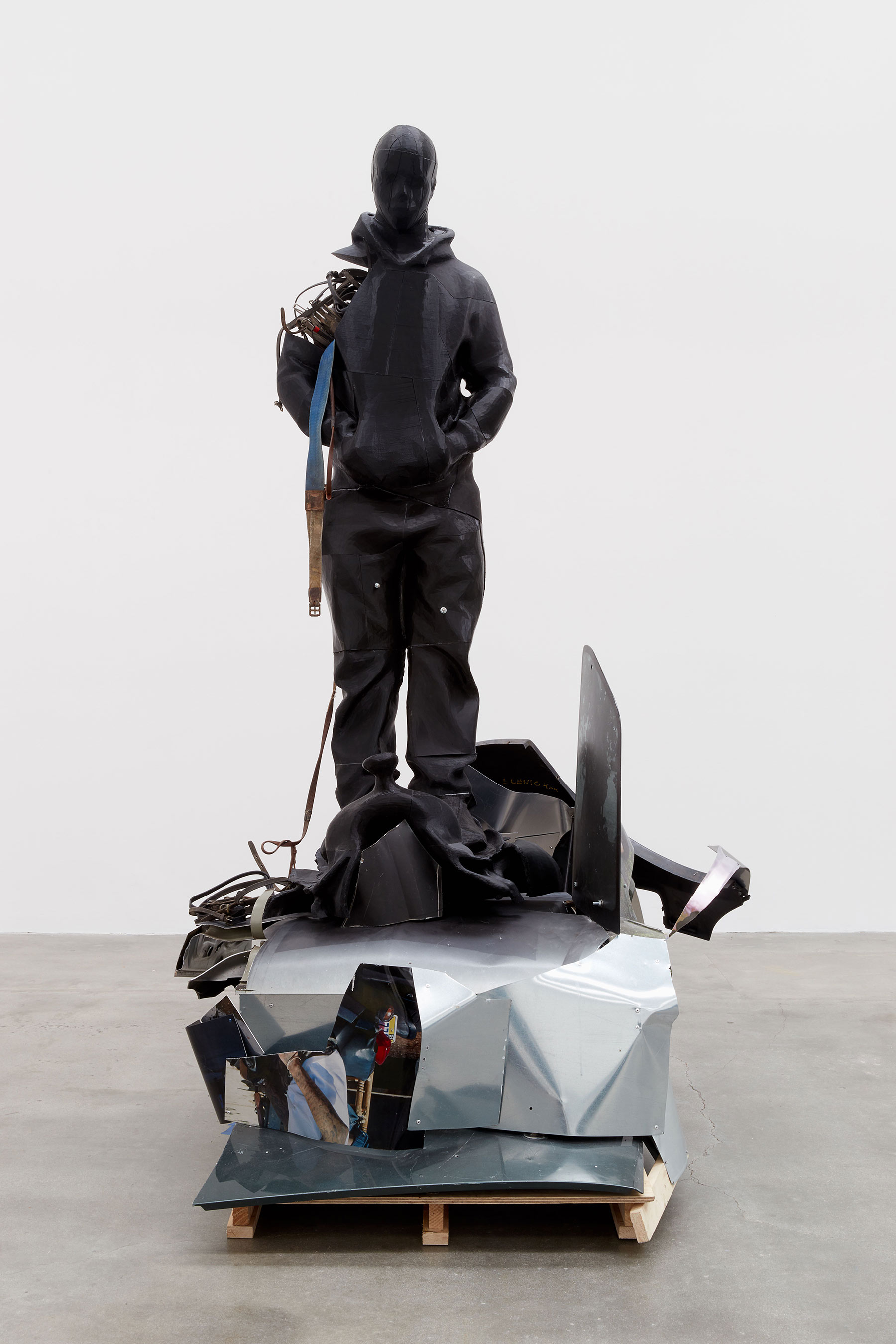
Mohamed Bourouissa
Caleb on the Horse
Polyactic acid 3D sculpture, resin, fiberglass,
polyurethane seal, silver print on galvanized
steel, silver print on car body parts, print on
Sublichrome, galvanized steel, car body parts,
rivets, hardware, spray paint, varnish, soil, horse
bridal, horse reigns, horse straps, wood,
266.7 x 167.60 x 151.1 cm
2018
Mohamed Bourouissa (French, born in 1978 in Algeria) explores the behaviors of social groups, various processes of inclusion and exclusion, and the creation of own collective identities, often enforced by rituals. Working across various mediums such as photography, video, installations and sculpture, Bourouissa questions the societal rules pointing at their conditional status and human biases in interpretation of their own positions.
Bourouissa considers his immigrant identity a formative aspect of his work, developing his art into what he calls a memory of his generation – being the young inhabitants of the Parisian banlieue (suburbs) that used to be invisible to a certain extent. In order to give profound insights into their habitus, Bourouissa applied unconventional approaches, such as his direct participation in their lives, and even sometimes operating in what could be called a criminal milieu. Being a viewer of his films makes you aware of the complexity of the moral choices his characters face, and the fluid borders of what we, as a society, consider legal and illegal.
Caleb on the Horse (2018) refers to his important project Horse Day (2013-2017), for which Bourouissa investigated the urban African-American horsemen community in Philadelphia. The artist claims that this project changed his practice by allowing performative elements into it, but maybe even more importantly, when working on this project in Philadelphia, he became aware of his and others’ perceptions of himself. *Caleb on the HorseÜ is made out of a variety of contemporary urban materials – presenting a young man in a hoodie standing on the saddle of his ‘horse’, being fragments of cars and detritus, directly referring to the historical public sculpture of equestrians that used to symbolize power and victory. The figure called Caleb misses the usual symbols of power, but his towering figure expresses calmness, dignity, and self-respect.